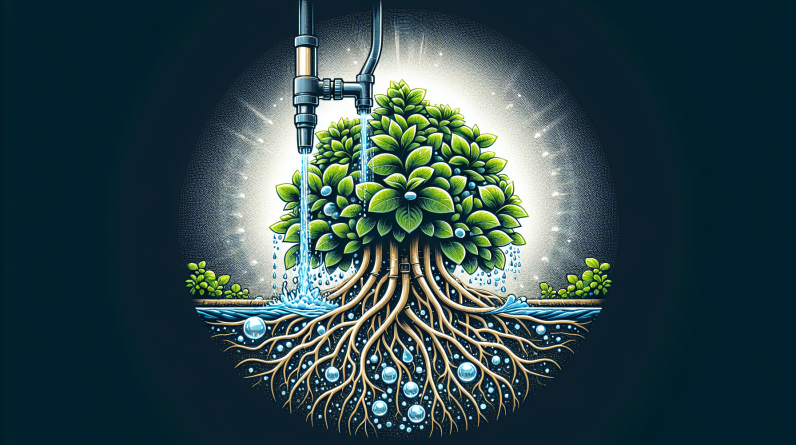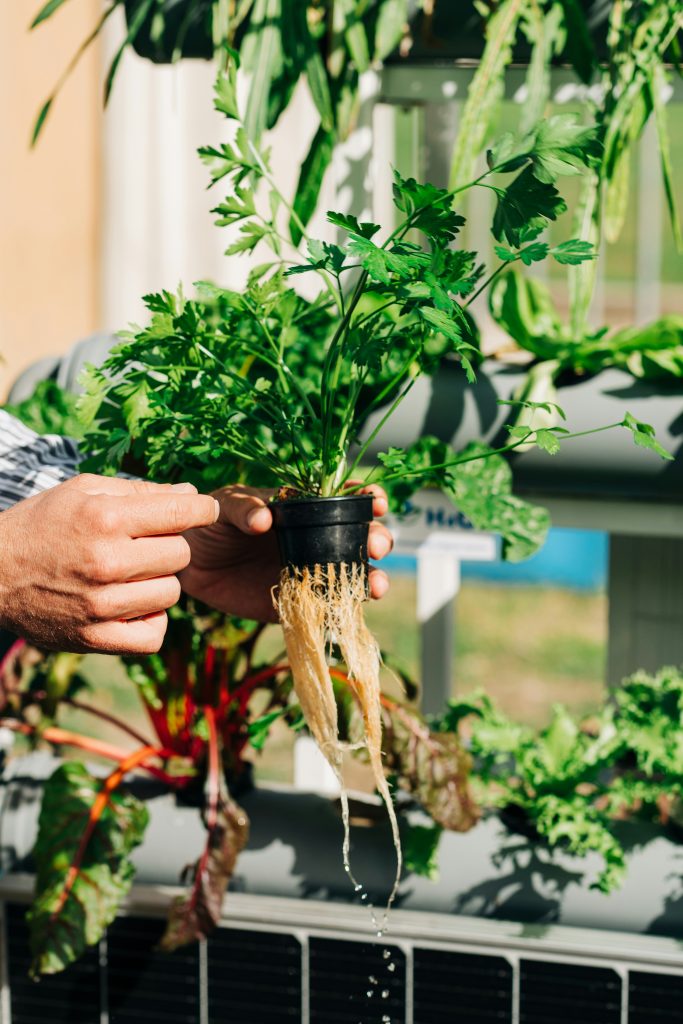
Welcome to the world of hydroponic growing systems, where water conservation is key. By providing plants with a nutrient-rich solution directly to their roots, these systems enable faster growth and increased yields while using up to 90% less water than traditional soil gardening methods. With the ability to cultivate crops year-round and the added benefits of reduced risk of diseases and pests, hydroponic systems offer a sustainable and efficient approach to growing fresh, healthy produce. Dive into the world of water conservation in hydroponic systems and discover the numerous benefits this innovative gardening method has to offer. Have you ever wondered how you could play a role in conserving water while engaging in gardening or farming? You may have heard about hydroponic systems and how they can revolutionize the way we grow plants. But do you know about the significant water-saving benefits of hydroponic systems? Let’s delve into the world of water conservation in hydroponic systems and explore how you can contribute to preserving this precious resource while growing fresh produce right at home.
Understanding Hydroponic Systems
hydroponic growing systems are a innovative approach to cultivating plants without using soil. Instead of relying on soil to deliver nutrients to the plants, hydroponics utilizes a nutrient-rich water solution that is directly delivered to the plant roots. This method allows for faster plant growth and higher yields, as the plants have direct access to the essential nutrients they need for healthy development.
Have you ever considered trying out a hydroponic system in your home? While it may seem like a complex endeavor, hydroponic systems come in various sizes and setups, making them suitable for beginners and experienced growers alike. With the right knowledge and equipment, you can set up your own hydroponic system and enjoy the benefits of water-efficient gardening.
Types of Hydroponic Systems
There are several types of hydroponic systems available, each with its own unique features and benefits. From the simple Kratky method to the more advanced NFT (Nutrient Film Technique) system, you can choose a system that suits your preferences and space constraints. Understanding the different types of hydroponic systems will help you make an informed decision when setting up your own.
If you’re new to hydroponics, you might want to start with a basic system like the Kratky method, which requires minimal equipment and maintenance. As you gain experience and confidence, you can explore more complex systems such as Deep Water Culture (DWC) or Ebb and Flow systems to expand your growing capabilities.
The Water-Saving Advantage
One of the key benefits of hydroponic systems is their exceptional water efficiency compared to traditional soil gardening. Hydroponic systems use up to 90% less water than soil-based gardening methods, making them an ideal choice for water-conscious individuals. By circulating nutrient-rich water directly to the plant roots and recirculating any excess water, hydroponic systems minimize water wastage and promote sustainable water usage.
Imagine being able to grow lush plants and bountiful crops with significantly less water waste. With a hydroponic system, you can achieve just that while reducing your environmental impact and contributing to water conservation efforts.

Strategies for Water Conservation in Hydroponic Systems
Now that you understand the water-saving benefits of hydroponic systems, let’s explore some strategies to maximize water conservation in your setup. With these simple tips and techniques, you can further reduce water usage and optimize the efficiency of your hydroponic system.
Monitor Nutrient Levels
Maintaining the correct nutrient levels in your hydroponic system is essential for healthy plant growth and water conservation. By regularly monitoring the nutrient solution and adjusting the nutrient levels based on plant requirements, you can prevent wastage and ensure optimal nutrient uptake by the plants.
Consider using a pH and EC (Electrical Conductivity) meter to measure the nutrient levels in your hydroponic system accurately. This will allow you to make precise adjustments to the nutrient solution, preventing overfeeding or undernourishment of your plants. By keeping a close eye on the nutrient levels, you can promote water conservation and create a thriving growing environment for your plants.
Recirculate Water
One of the most effective ways to conserve water in a hydroponic system is to implement a recirculating system that captures and reuses excess water. Instead of letting the nutrient solution drain away, recirculate it back to the reservoir for reuse in the system. This not only reduces water wastage but also ensures that the plants have a continuous supply of nutrients for healthy growth.
Investing in a quality recirculating setup, such as a pump and tubing system, can help you efficiently manage water usage in your hydroponic system. By recycling the nutrient solution and maintaining a closed-loop system, you can significantly minimize water consumption and enhance the sustainability of your gardening practices.
Optimize Lighting and Temperature
Proper lighting and temperature control are crucial factors in maximizing water conservation in a hydroponic system. By optimizing the lighting schedule and using energy-efficient grow lights, you can minimize water evaporation and ensure that the plants receive adequate light for photosynthesis. Additionally, maintaining optimal temperature levels in the growing environment can prevent excessive transpiration and water loss from the plants.
Consider investing in LED grow lights or other energy-efficient lighting options to reduce water evaporation and energy consumption in your hydroponic system. By controlling the temperature and humidity levels in the growing area, you can create a favorable environment for plant growth while conserving water and energy resources.
Implement Automated Systems
Automation can play a significant role in water conservation and efficiency in hydroponic systems. By incorporating automated timers, sensors, and controllers into your setup, you can regulate water delivery, nutrient dosing, and environmental conditions with precision and accuracy. This not only minimizes water wastage but also streamlines the management of your hydroponic system.
Consider integrating automatic watering systems, nutrient pumps, and environmental monitors into your hydroponic setup to optimize water usage and plant growth. With programmable timers and sensor-based controls, you can ensure that your plants receive the right amount of water and nutrients at the right times, reducing the risk of overwatering or underwatering. Automation can simplify the maintenance of your hydroponic system while promoting water conservation and sustainability.

Benefits of Water Conservation in Hydroponic Systems
As you implement water-saving strategies in your hydroponic system, you’ll not only contribute to water conservation efforts but also enjoy a range of benefits that enhance your gardening experience. From cost savings to environmental sustainability, water conservation in hydroponic systems offers numerous advantages for growers of all levels.
Cost Savings
By reducing water usage in your hydroponic system, you can lower your water bills and operating costs significantly. With less water being consumed and wasted, you’ll save money on utility expenses and resources, making hydroponic gardening a cost-effective option in the long run.
Sustainable Practices
Water conservation in hydroponic systems aligns with sustainable gardening practices and environmental stewardship. By minimizing water wastage and promoting efficient resource utilization, you can reduce your ecological footprint and contribute to a more sustainable future for generations to come.
Healthier Plants
Optimizing water usage in your hydroponic system can lead to healthier plants and improved crop yields. By providing the right amount of water and nutrients to the plants, you’ll create an ideal growing environment that promotes robust growth, disease resistance, and high-quality produce.
Enhanced Productivity
With water conservation measures in place, your hydroponic system can operate more efficiently and reliably, leading to increased productivity and yield. By ensuring that the plants receive adequate water and nutrients, you can maximize their growth potential and achieve higher crop production.
Environmental Benefits
Water conservation in hydroponic systems has positive environmental impacts, reducing water consumption, and promoting sustainable agriculture practices. By conserving water resources and minimizing wastage, you can help protect freshwater ecosystems and preserve this vital resource for future generations.

Conclusion
In conclusion, water conservation in hydroponic systems plays a crucial role in promoting sustainable gardening practices and efficient resource management. By understanding the water-saving advantages of hydroponic systems and implementing strategies to optimize water usage, you can contribute to preserving this precious resource while enjoying the benefits of fresh produce at home. Whether you’re a novice grower or an experienced gardener, taking steps to conserve water in your hydroponic setup can lead to cost savings, environmental sustainability, and healthier plants. Embrace the power of water conservation in hydroponic systems and make a positive impact on the planet while cultivating thriving gardens right at home.




